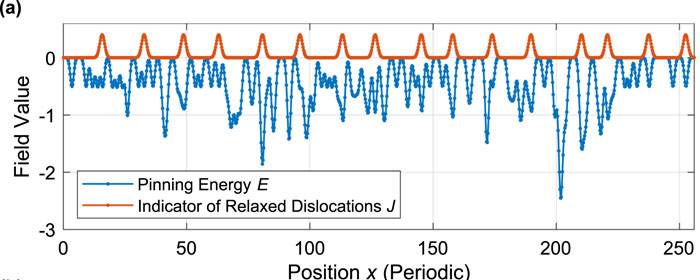A paper with the title Machine learning depinning of dislocation pileups, based on the recent diploma thesis of Mika Sarvilahti, has been published in APL Materials. Congrats, Mika!
Abstract: We study a one-dimensional model of a dislocation pileup driven by an external stress and interacting with random quenched disorder, focusing on the predictability of the plastic deformation process. Upon quasistatically ramping up the externally applied stress from zero, the system responds by exhibiting an irregular stress–strain curve consisting of a sequence of strain bursts, i.e., critical-like dislocation avalanches. The strain bursts are power-law distributed up to a cutoff scale that increases with the stress level up to a critical flow stress value. There, the system undergoes a depinning phase transition and the dislocations start moving indefinitely, i.e., the strain burst size diverges. Using sample-specific information about the pinning landscape as well as the initial dislocation configuration as input, we employ predictive models such as linear regression, simple neural networks, and convolutional neural networks to study the predictability of the simulated stress–strain curves of individual samples. Our results show that the response of the system—including the flow stress value—can be predicted quite well, with the correlation coefficient between the predicted and actual stress exhibiting a non-monotonic dependence on strain. We also discuss our attempts to predict the individual strain bursts.
M. Sarvilahti, A. Skaugen, and L. Laurson, Machine learning depinning of dislocation pileups, APL Mater. 8, 101109 (2020).

